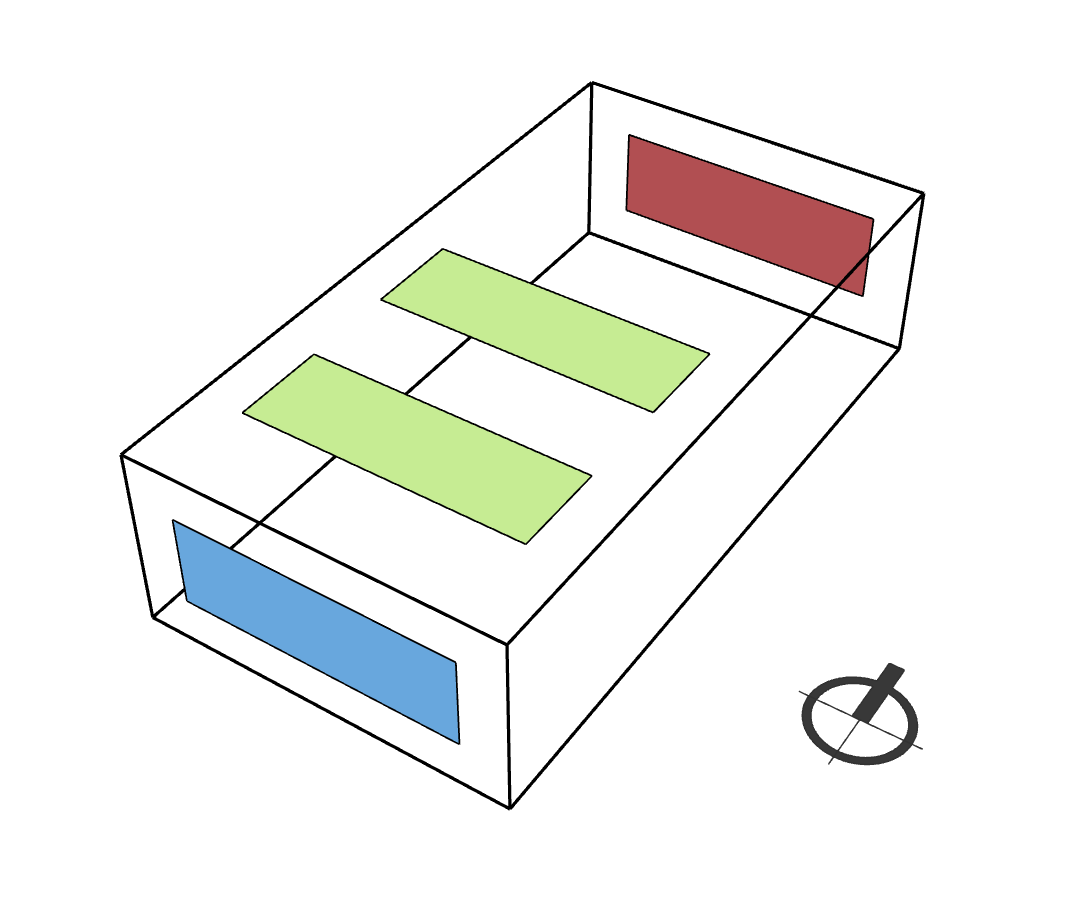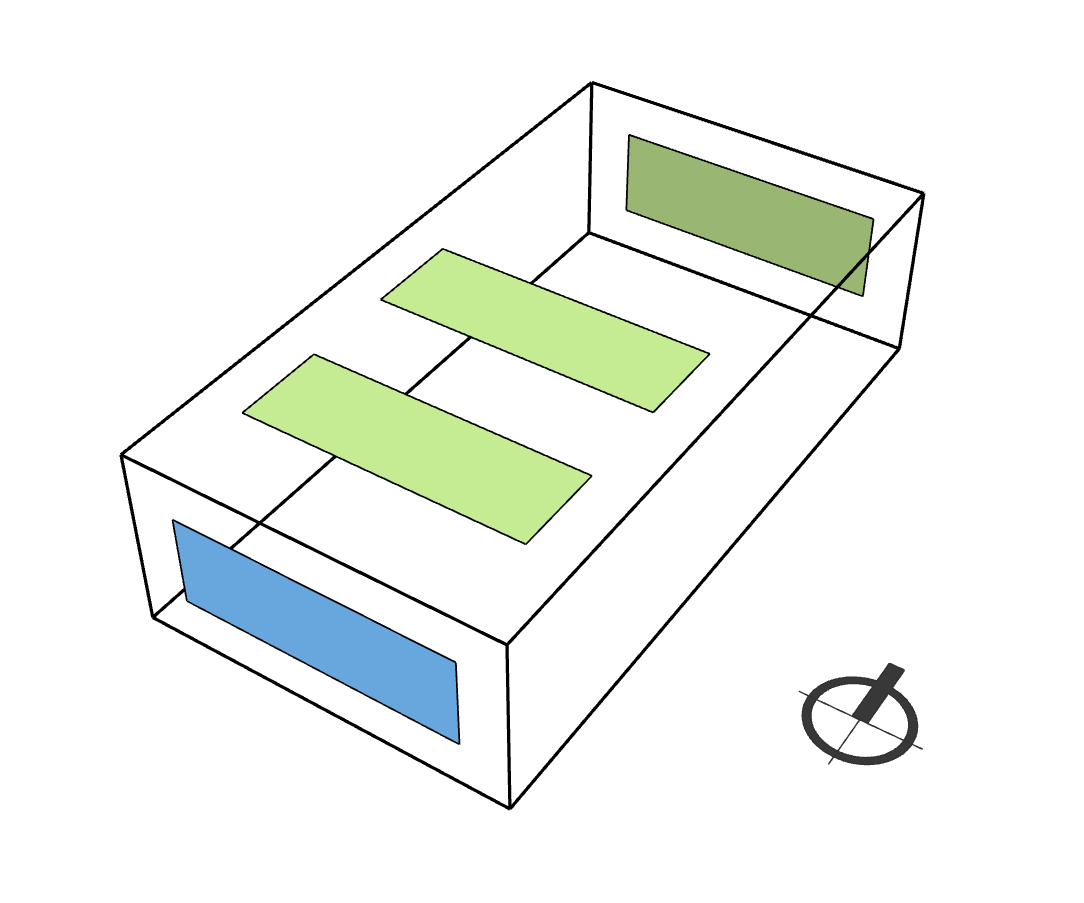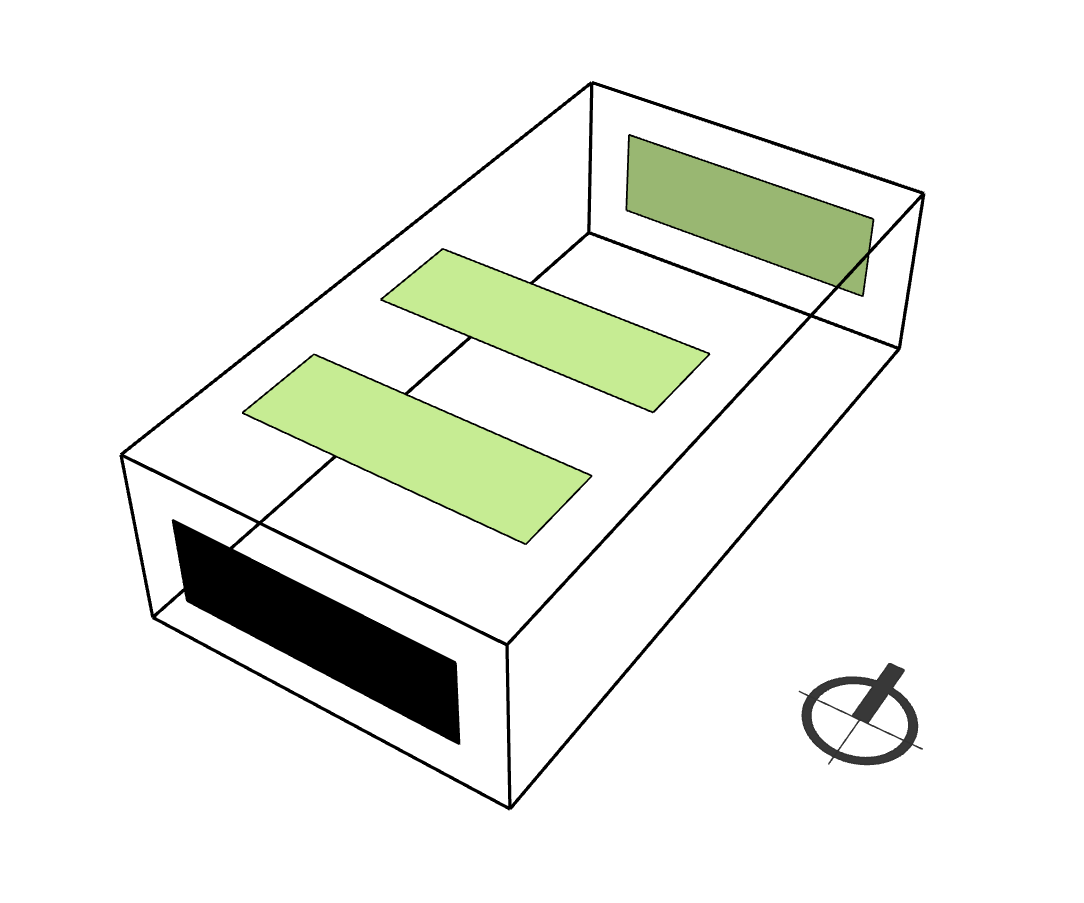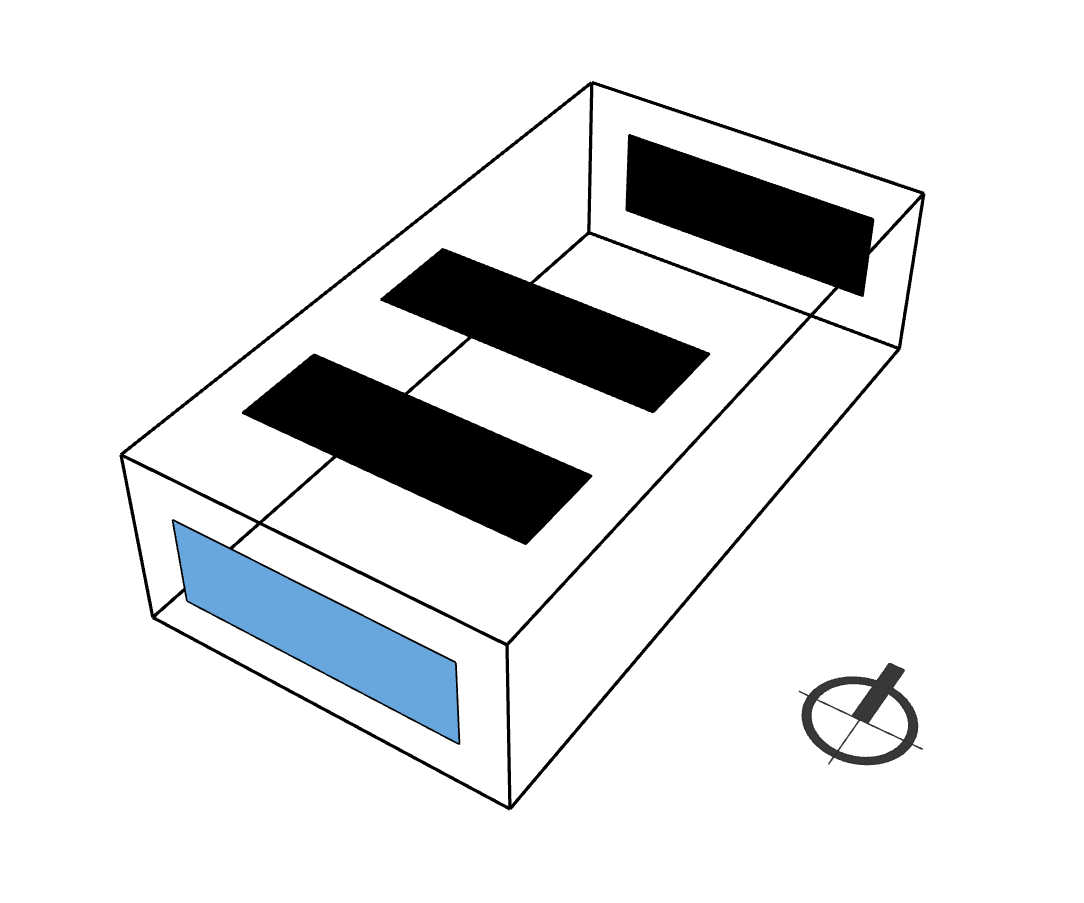Hi @SandiSirikhanchai and @sarith, Sorry for the very late reply. I somehow managed not to reply to this discussion which is the one that I should have replied first! 
The way Honeybee[+] handles 3-phase and 5-phase in slightly different from the standard 3/5-phase. It is neccassary to avoid extra calculations and also make it flexible/usable for real world problems. I should give credits to Rob Guglielmetti for this workflow. This is a modified version of what he came up with for OpenStudio Radiance integration.
What is the challenge?
Consider this room with one window facing south with two blind states, one window facing north with no dynamic blinds and two skylights with no dynamic blinds.
In a classic 3/5-Phase modeling approach you need to create a window group for south window, another one for north and finally another one for skylights. If there is surrounding context that affects the skylights then you need to create a separate window group for each skylight. There are 2 limitations in this approach:
- Even for a simple case like this you will end up with 3-4 window groups.
- If you use 3-phase you will end up with less accurate results for also skylight and north windows. You have to use BSDFs even though they are just static glass surfaces with some standard materials.
How does Honeybee[+] handles such cases?
To address this issue Honeybee[+] breaks down the window groups into two categories:
- Static windows: All the windows with no state as single window group /
luminous aperture. - Window groups: Each window groups stay as is.
If you check a Honeybee[+] folder you’ll see that there are two separate folders for
glazing and wgroups which corresponds to these two categories.
Now it runs two series of analysis:
-
It replaces all the window groups with black surfaces and runs a 2-phase simulation (aka. daylight coefficient recipe) for the static windows. This is the contribution from outdoor through all the static glasses. You can find the results for this step in
scene..default.ill.
-
The normal 3-Phase or 5-Phase for all the dynamic window groups.
The final result is the addition of static glasses and all the window-groups (in this case there is only one of them).
I hope this clarifies why there are two separate parts in 3-phase, 5-phase studies with Honeybee[+]. This method saves time and also adds flexibility. I should say that there is only one draw-back in using this method. If you don’t have any static windows in the model AND all you points are located indoor AND there is no opening other than windows then the first part of the analysis will return all 0s since it’s the scene with all the window-groups set to black opaque surfaces. I’m thinking to add an option to clarify an AnalysisGrid is indoor only so honeybee can decide if the first step is neccassary.



